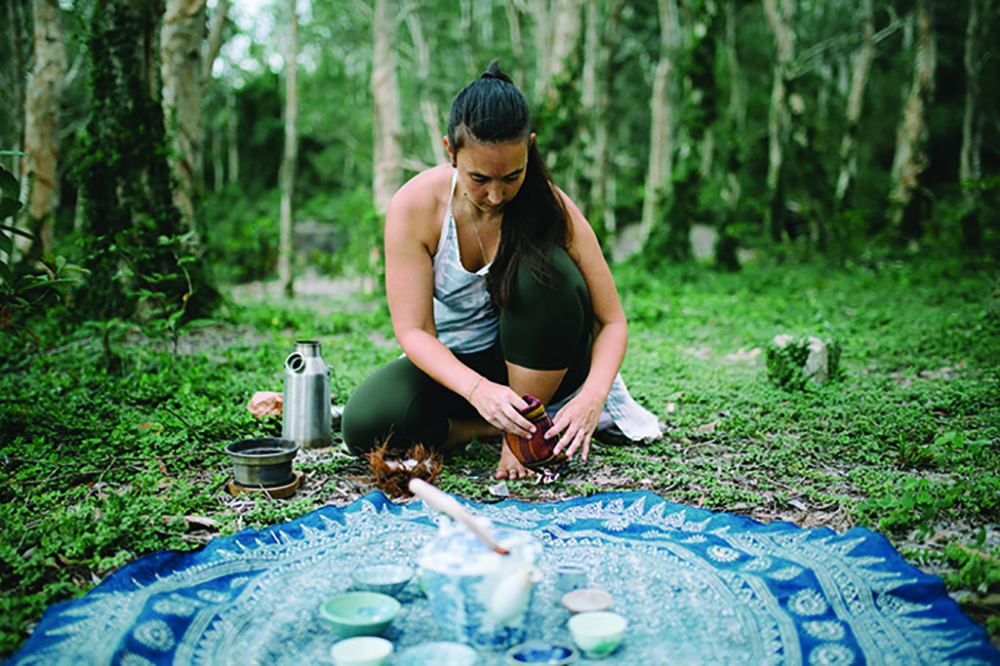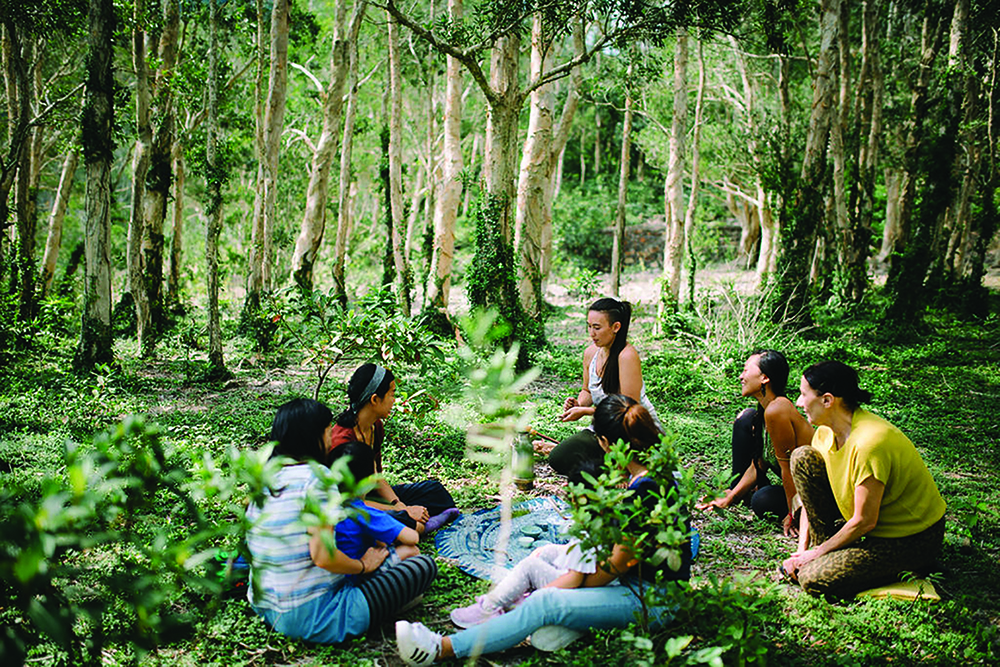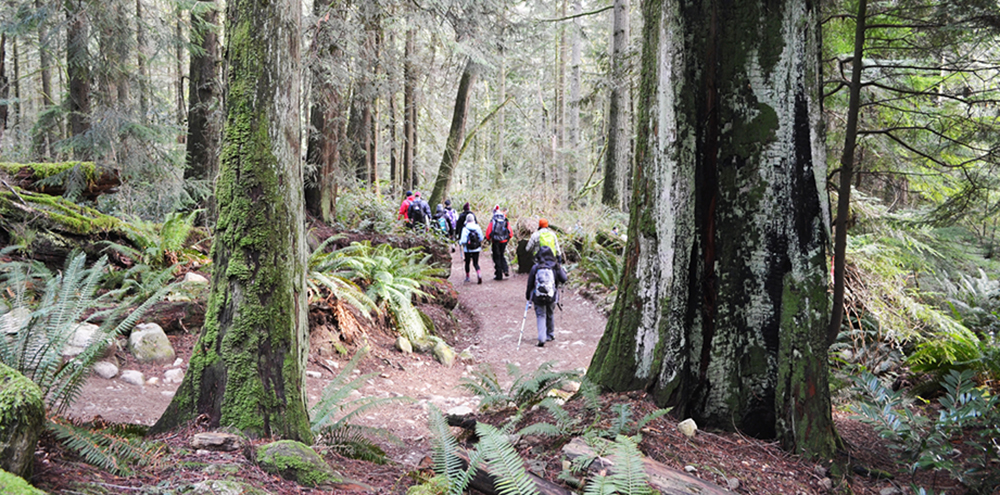
Nature prescriptions are starting to catch on all over the world, from Japan to Scotland to Canada. But could a doctor’s order to spend more time outdoors ever catch on here? Carla Thomas investigates.

Imagine going to see your doctor about a health problem, and rather than receiving a litany of unpronounceable medications, being prescribed a long walk outdoors instead. This is slowly becoming a reality in doctors’ offices around the world, from Canada to America, Japan to the Shetland Islands. There’s an increasing body of scientific evidence that suggests that time spent in nature might actually be essential to keeping us well in the long run, something that we miss out on with increasingly urban and sedentary lifestyles. Medical experts are starting to pay attention to that data, and using their prescription pads to effect change by recommending patients get outside and reap the long-ignored benefits of the great outdoors.

Another evolutionary theory suggests that specific details of natural environments, like spatial openness, the presence of natural patterns or structures, and water, all actually reduce heightened stress responses brought on by modern environments – which evolutionarily speaking, are quite hostile for our bodies to exist in. The Stress Reduction Theory (Ulrich, 1983) explains why many of us find it so innately healing to be in nature.
We all instinctively know getting outside is good for us, but it’s hard for most people to explain why that is. Sure, we feel better overall after some time spent in nature – but where does that come from, physiologically speaking?
Attention restoration theory (Kaplan & Kaplan, 1989) is a theory that’s often used to account for the positive effects of nature. The theory suggests that the environmental stimuli of nature actually allows us to recover from attention fatigue, something we frequently suffer from in our modern lives as a result of “the performance of cognitive tasks that require prolonged maintenance of directed attention.” Simply put, we’re spending a lot of time staring at our computers and mobile phones, an unnatural use of our cognitive faculties.
What Science Tells Us
Working with these theories, countless studies have been done to figure out exactly how we can make use of them – and as it turns out, the benefits are myriad. A 2009 study found that people who lived within a half mile of green areas had a lower incidence of 15 of the most common medical conditions, including heart disease, diabetes, asthma, migraines, anxiety and depression. A similar study from Harvard and Brigham and Women’s Hospital surveyed 108,000 women over eight years, and found that women who lived in or near green areas had a 12 percent lower death rate than those who didn’t.
Even if you don’t live near a green space, the benefits of getting outside on one’s health can still be harnessed. One study from Saarland University in Germany suggests that as little as 25 minutes of brisk walking per day can dramatically increase life expectancy by up to seven years.
And it’s not just the woods that do us good; there’s ample evidence that suggests that being near the water also has therapeutic value. A 2013 study that used GPS and self-reports of wellbeing logged over smartphones found that marine and coastal locations were consistently correlated to higher measures of reported happiness.
Study after study points to nature having observable and measurable positive effects on our wellbeing, from reducing our cortisol (our stress hormone), increasing cerebral blood flow, even enlarging our hippocampus (our brain’s memory region) – all of which contribute to a holistically better health outcome for us than regularly staying inside.
Nature Prescriptions in the Wild
So how are doctors implementing nature prescriptions? Dr. Melissa Lem is a Vancouver-based physician who has been a long-time advocate for the health benefits of being outdoors. After noticing a decline in her own health following a move from a rural town in British Columbia to an urban environment, Dr. Lem started to investigate the connection between green time and health.
“When I moved back to my hometown Toronto to practise, despite having a less demanding job with fewer hours, I noticed that I felt more stressed and tired,” says Dr. Lem. “Especially when a streetcar would roll by my front window or I would walk the busy streets.” She says she quickly found that there was a body of research on the topic that has only gotten better and more compelling over time.

This prompted her to make it her mission, conducting research, writing and communicating to the public about the importance of time in nature, eventually becoming a board member of the Canadian Association of Physicians for the Environment (CAPE). Last year, she was appointed as Director of Parks Prescriptions for the British Columbia Parks Foundation, a role in which she is responsible for planning and launching Canada’s first province-wide, and eventually national, nature prescription programme, called PaRx.
The initiative works with doctors and other healthcare providers to encourage prescribing time in nature to their patients, encouraging the health benefits of green time and – Lem hopes – a national movement.
“Along with CAPE and the BC Parks Foundation, I hope to make nature prescriptions go mainstream in Canada over the next few years, with doctors prescribing nature as often as they’re prescribing medication – it’s just a matter of getting the information out there, breaking down barriers and inspiring change.”
An Idea Takes Root
British Columbia isn’t the only province in Canada to attempt a wide-scale ecotherapy initiative. Ontario also offers Mood Walks, a provincial program that offers training and support for community mental health associations (CMHA) to launch educational walking programs for individuals suffering from mental health issues.
A representative from CMHA Ontario says that people with mental health issues tend to be more sedentary than the general population, which often leads to more serious health declines. Mood Walks advocates for green exercise – physical activity done outdoors instead of in your home or in a gym – as a proven means to alleviating depression and anxiety, as well as secondary symptoms such as low self-esteem and social withdrawal.
Similar medically-backed initiatives are found in the UK’s Shetland Islands, where “nature prescriptions calendars” are handed out to patients by GPs; Japan, which has advocated shinrin-yoku (forest bathing) since the 80s; and even in the US. Park Rx America is a non-profit nationwide organisation that works with park managers and healthcare professionals to educate doctors on the benefits of nature precriptions as a preventative measure; nearly 500 “prescribers” have already signed on to that initiative.
Coming to Hong Kong Soon?

With its ample green spaces and access to water, Hong Kong seems perfectly equipped for nature prescriptions to take root. While they might not have caught on with doctors here yet, there are some resources that people can access if they want to self-medicate on the great outdoors.
Jasmine Nunns is Hong Kong’s first certified Nature & Forest Therapy Guide. Her company, Kembali, offers “restorative nature-based rewilding experiences” by leading groups through outdoors experiences like forest bathing and nature-based coaching. She believes that the city’s abundant wilderness has powerful healing properties that many Hongkongers could use as a powerful recovery tool from the onslaught of mega-urban life.
“Living in such an urban environment, people can disconnect from their bodies and find themselves numbing or coping with the multiple ways in which we are bombarded with information and stimulation,” says Nunns.
She lists various health benefits, from lower blood pressure and improved sleep to better outcomes for patients suffering from ADHD or PTSD, all of which studies have shown can be induced by spending time in nature.
Despite the science, Nunns says she has yet to meet someone in Hong Kong who has received a nature prescription from their doctor – yet. She believes it’s only a matter of time before doctors here catch up with healthcare professionals in places like New Zealand, Japan or the UK, where one of her teachers ran an NHS-backed programme that used coastal walks to alleviate anxiety in patients.
“I think there will be a rise in recognition from the health industry to acknowledge the benefits of nature-based treatments from a physical and a psychological point of view,” she says. “But we have to remember that as much as nature-based therapies are on the rise, they are in no way a new prescription. Our ancestors would have had access and prioritised this relationship with the land, and seen it as a reciprocal relationship.”
